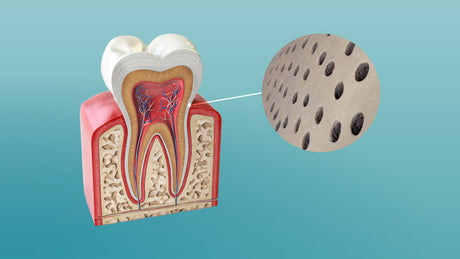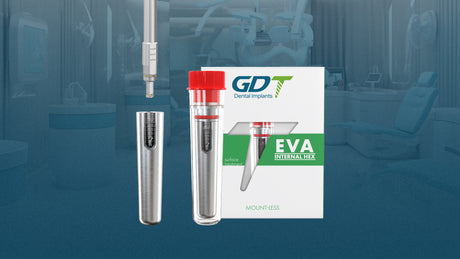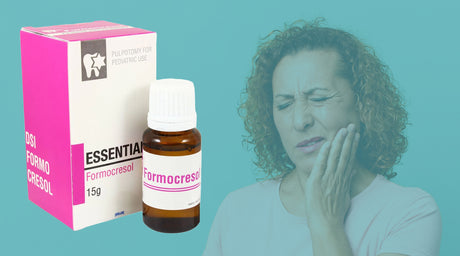Orthodontics is a vital specialty in dentistry, centered on diagnosing, preventing, and correcting misaligned teeth and jaws. WholeDent.com, a premier provider of dental solutions, is committed to equipping dental professionals with superior products that enhance their practice in this transformative field. This article delves into the principles, techniques, and advancements in orthodontics, offering dental experts a comprehensive understanding of this crucial area of dental care.
Understanding Orthodontics
Orthodontics involves the treatment of irregularities in the teeth and jaws. By employing various appliances and techniques, orthodontists aim to improve oral function, aesthetics, and overall dental health.
Key Components of Orthodontic Treatment:
- Diagnosis: Identifying the type and severity of malocclusion (misalignment of teeth).
- Treatment Planning: Developing a customized plan to correct the alignment using braces, aligners, or other orthodontic devices.
- Appliance Selection: Choosing the appropriate orthodontic appliance based on the patient’s needs.
Common Orthodontic Problems
- Crowding: Insufficient space for teeth to align properly within the jaws.
- Spacing: Gaps or spaces between teeth due to missing teeth or other factors.
- Overbite: Upper front teeth excessively overlap the lower front teeth.
- Underbite: Lower front teeth extend past the upper front teeth.
- Crossbite: Upper teeth fit inside the lower teeth when the mouth is closed.
- Open Bite: Front teeth do not touch when the mouth is closed, creating an opening.
Orthodontic Appliances and Techniques
Orthodontists use a variety of appliances and techniques to correct dental and jaw alignment issues:
- Braces: Traditional metal braces are the most common orthodontic treatment. They consist of brackets bonded to the teeth and connected by wires that apply pressure to move teeth into the desired position.
- Ceramic Braces: Similar to metal braces but with tooth-colored or clear brackets that are less noticeable.
- Lingual Braces: Braces placed on the inside surface of the teeth, making them invisible from the outside.
- Clear Aligners: Removable, transparent trays (such as Invisalign) that gradually shift teeth into alignment.
- Retainers: Devices used after braces to maintain the position of straightened teeth.
- Palatal Expanders: Appliances used to widen the upper jaw to create more space for teeth.
- Headgear: External appliances that apply pressure to correct severe bite issues.
Advancements in Orthodontics
Have significantly improved the efficiency and effectiveness of treatments, offering patients better outcomes and more comfortable experiences. Modern techniques such as 3D imaging and digital modeling allow for highly accurate diagnosis and treatment planning, ensuring that each case is approached with precision.
Additionally, innovations like CAD/CAM technology have revolutionized the way orthodontic appliances are designed and manufactured, providing a customized fit that enhances patient comfort. The development of self-ligating brackets has reduced the need for traditional elastic ties, resulting in less friction and allowing teeth to move more freely during treatment.
Furthermore, accelerated orthodontic methods, including micro-osteoperforation and vibration therapy, have been introduced to reduce treatment time by speeding up tooth movement. Emerging technologies such as smart brackets, which monitor and adjust the force applied to teeth, represent the future of orthodontics, promising even more personalized and efficient treatment options.
Benefits of Orthodontic Treatment
- Improved Oral Health: Correcting misaligned teeth makes it easier to clean teeth properly, reducing the risk of decay and gum disease.
- Enhanced Aesthetics: Straighter teeth and properly aligned jaws improve the overall appearance of the smile and face.
- Better Functionality: Properly aligned teeth and jaws improve biting, chewing, and speaking functions.
- Boosted Confidence: A beautiful, straight smile enhances self-esteem and confidence.
Challenges in Orthodontics
Despite the numerous benefits, orthodontic treatment can present challenges that need to be managed effectively:
- Patient Compliance: Success of treatments like clear aligners and headgear depends heavily on patient adherence to wearing the appliances as prescribed.
- Discomfort: Braces and other orthodontic appliances can cause discomfort, especially after adjustments.
- Duration of Treatment: Orthodontic treatment often requires a long-term commitment, typically ranging from one to three years.
- Cost: Orthodontic treatments can be expensive, and not all patients have insurance coverage to offset the costs.
WholeDent’s Orthodontic Solutions
WholeDent.com offers a wide range of high-quality orthodontic products to support dental professionals in delivering top-notch care. Our selection includes durable and effective orthodontic brackets and wires, designed for optimal performance and patient comfort.
Additionally, we provide reliable retainers and appliances to help maintain treatment results and support ongoing oral health. These products are crafted to meet the highest standards, ensuring that dental professionals can offer their patients the best possible outcomes.
Conclusion
Orthodontics plays a critical role in improving oral health and aesthetics. By leveraging the latest advancements and high-quality products from WholeDent.com, dental professionals can deliver exceptional orthodontic care. Our commitment to excellence ensures that you have access to the best tools in achieving successful patient outcomes.
Q&A: Expert Insights into Orthodontics
What are the early signs that a child may need orthodontic treatment?
Early signs include prolonged thumb-sucking, difficulty chewing or biting, mouth breathing, crowded or misplaced teeth, and jaws that shift or make sounds. An orthodontic evaluation is recommended by age seven to identify any potential issues.
What are the benefits of using orthodontic brackets and wires from WholeDent.com?
Orthodontic brackets and wires from WholeDent.com are designed with durability and patient comfort in mind. They provide effective performance, ensuring precise tooth movement and reliable results. These high-quality materials contribute to smoother treatment experiences for both dental professionals and patients, leading to optimal outcomes in orthodontic care.
Can adults benefit from orthodontic treatment?
Yes, adults can benefit significantly from orthodontic treatment. Modern orthodontics provides a variety of options tailored to adult patients, including self-ligating brackets and traditional braces. These treatments can improve oral health, aesthetics, and functionality at any age, helping to achieve a confident smile and better overall dental well-being.
How do self-ligating brackets differ from traditional brackets?
Self-ligating brackets use a built-in mechanism to hold the archwire in place, eliminating the need for elastic ties. This reduces friction and allows for smoother and more comfortable tooth movement, potentially shortening treatment time.
How do high-quality orthodontic materials contribute to successful treatment outcomes?
High-quality orthodontic materials, such as durable brackets and wires, play a crucial role in achieving successful treatment outcomes. These materials ensure precise tooth movement, enhance patient comfort, and reduce the likelihood of complications during treatment. WholeDent.com is dedicated to providing dental professionals with top-tier orthodontic products, supporting optimal patient care and satisfaction throughout the treatment process.














